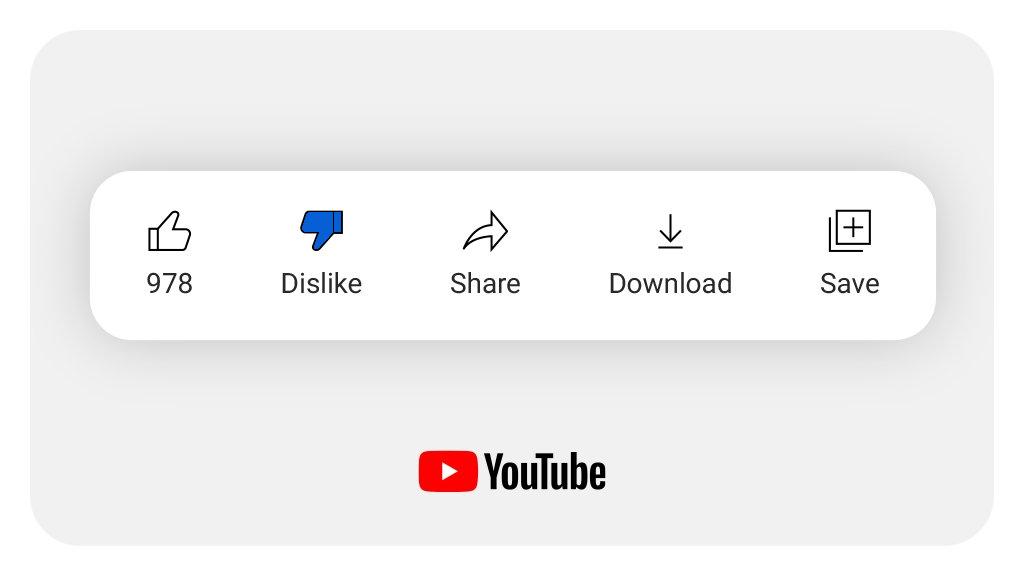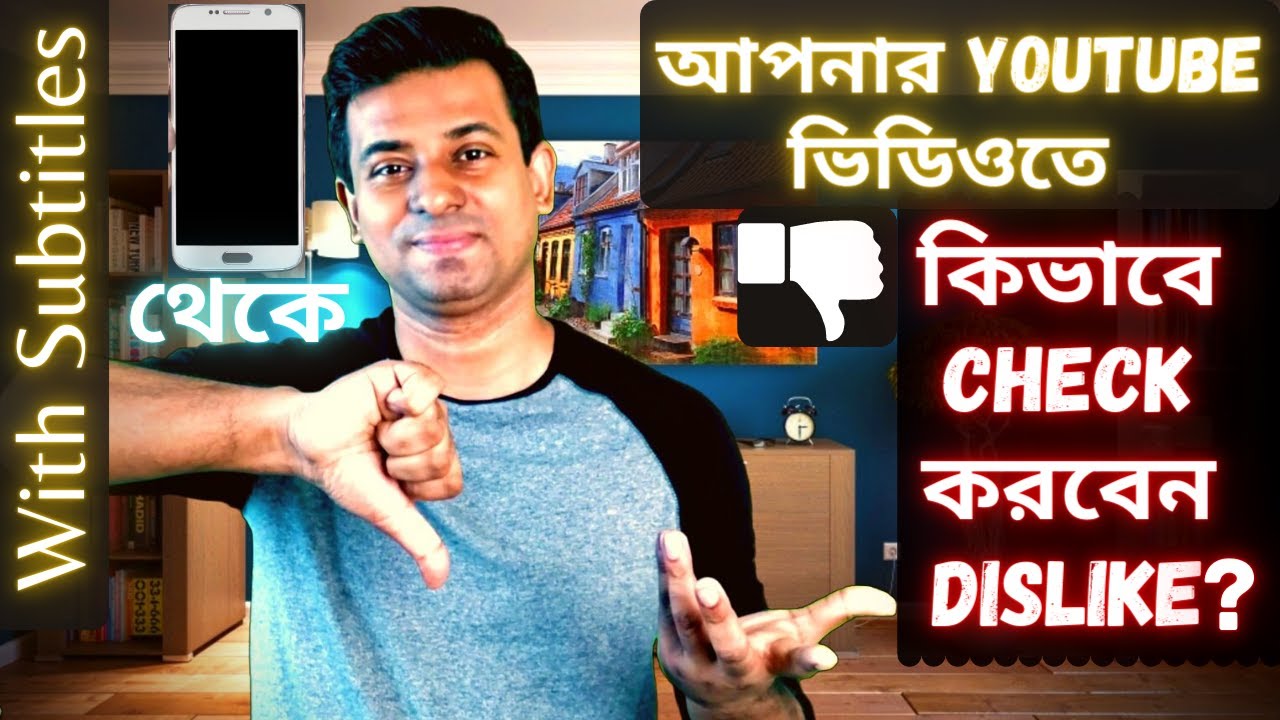YouTube is a platform where millions of videos are watched every day, and while most viewers focus on the likes and views, the dislike button often goes unnoticed. The dislike feature may seem negative, but it plays a crucial role in shaping the experience for both viewers and creators. In this blog post, we'll dive into the enigma behind YouTube dislikes, exploring their purpose and impact on content creation. Prepare to unravel the mystery of a little button that wields significant influence!
The Purpose of Dislikes on YouTube

The dislike button on YouTube serves several key roles, even if it's often viewed as the antagonist to the "like" feature. Let’s break it down:
- Feedback Mechanism: Dislikes provide essential feedback to creators. When a video receives a high number of dislikes, it signals that the content may not resonate with its audience. This feedback helps creators understand their viewers' preferences and improve future content.
- Quality Control: In a sea of content, dislikes act as a gatekeeper. They help highlight videos that don't meet viewer expectations, ensuring that quality content rises to the top. If you see a video with a lot of dislikes, you might think twice before watching!
- Audience Engagement: The dislike button encourages engagement by enabling viewers to express their opinions. This interaction contributes to a more vibrant community, where discussions can flourish over what works and what doesn't.
- Algorithm Influence: Dislikes can influence YouTube's recommendation algorithm. While it primarily focuses on likes and watch time, a high dislike ratio may result in reduced visibility for certain types of content, guiding the platform towards more favored videos.
In short, dislikes aren't just a negative mark; they play a significant role in shaping the YouTube landscape, fostering growth and improvement among creators, and assisting viewers in finding content more aligned with their tastes. Understanding their purpose can lead to a better appreciation of this often-misunderstood feature.
3. Privacy and User Engagement

When we dive into the topic of YouTube dislikes, it’s essential to consider how these features relate to privacy and user engagement. YouTube has always been a platform where users are encouraged to express their opinions genuinely. In this digital landscape, the dislike button offers viewers the chance to voice their discontent. However, it also leads to a pertinent question: how much do we know about how our reactions are used and displayed?
On a broader level, dislikes can affect content engagement rates. When a video receives a high frequency of dislikes, it can signal to YouTube’s algorithm that the content may not meet the audience's expectations. This, in turn, could affect the video's visibility and reach, potentially limiting the creator’s audience. This delicate balance raises concerns, especially regarding the potential for misuse—like dislike-bombing, where coordinated users target a video just out of spite.
Moreover, let’s not overlook the privacy aspect of this equation. The anonymity of disliking a video often leads users to express negative opinions freely, without much thought. But this anonymity doesn't always shield them from the consequences of their actions. Creators may take dislikes personally, leading to feelings of discouragement. Privacy is crucial, yet it should not become a shield for harmful behaviors.
Ultimately, dislikes play a complex role in user engagement on YouTube. They can encourage creators to improve their content, but they can also create an environment of negativity and discourage open expression. Finding harmony between honest feedback and respectful engagement is paramount for a positive YouTube experience.
4. The Impact of Dislikes on Content Creators
Let’s face it, seeing that red thumb-down next to your video can be a tough pill to swallow. For many content creators, dislikes are more than just numbers—they can be deeply felt emotional responses that affect their mental well-being. It's vital to understand how dislikes can impact creators emotionally and professionally.
First off, it can be disheartening to pour hours of creativity into a video only to see it met with a wave of dislikes. Many creators have openly shared that such feedback leads them to question their talents and decisions. This self-doubt can hinder creativity and innovation, as creators might fear risking new ideas that could also fall flat in the eyes of their audience.
However, it's not all doom and gloom—dislikes can also serve as constructive feedback. Here’s how:
- Content Improvement: Dislikes can guide creators in understanding what their audience does not enjoy. This feedback can be invaluable for improving future content.
- Audience Awareness: An influx of dislikes may prompt creators to engage more with their audience, creating discussions about what viewers like or dislike.
- Motivation to Evolve: Many creators use negative feedback as fuel to evolve their channels, exploring new formats, topics, or styles.
It's also worth mentioning that while dislikes can impact visibility on YouTube—potentially affecting a video's performance—they don't carry the same weight as views or likes. This means that while a video might have a few dislikes, it can still find a substantial audience if the content resonates positively with others.
In the end, the impact of dislikes on content creators is multi-faceted. It comes down to how creators process this feedback and leverage it to grow, both personally and professionally. After all, every creator has to remember that not everyone will like what they create, and that's perfectly okay!
YouTube's Policy Changes and Transparency
Over the years, YouTube has made several policy changes regarding how the platform handles dislikes. These changes are aimed at fostering a more positive environment for content creators and viewers alike. A significant shift occurred when YouTube decided to hide the dislike count on videos. This was a controversial decision that raised many eyebrows in the community.
The primary reason behind hiding dislikes, according to YouTube, was to reduce harassment and targeted dislike campaigns against creators. Now, only video creators can see the exact number of dislikes their content has received. This means that while the public can still express their disapproval through dislikes, they won’t see those figures, potentially encouraging a more positive interaction with the platform.
With this policy change, transparency has taken on a new meaning. Viewers are still able to leave a dislike, but the absence of visible counts means that many feel less inclined to join in on bandwagon dislike behaviors. YouTube aims to create a space where feedback can be constructive rather than destructive. But how transparent is this new approach?
- Understanding Impact: Creators can still gauge how their content is received privately.
- Psychological Effect: Lack of visible dislike counts may prevent discouragement among creators.
- Reactions from the Community: The change has received mixed reactions, with some applauding the initiative and others longing for the public dislike counts.
In essence, YouTube’s policy changes reflect its ongoing journey toward creating a healthy, constructive feedback loop between creators and viewers, even as it admits that the mystery of dislike dynamics continues to linger.
Alternatives to Dislike Counts for Feedback
With the recent policy changes on YouTube regarding dislike counts, you might be wondering how users and creators can still ascertain the quality and reception of content. Thankfully, there are a variety of alternatives that YouTube has introduced for collecting feedback, which can be just as beneficial, if not more so, than traditional dislike counts.
Here are some methods that both viewers and creators can utilize:
- Comments Section: Engaging discussions in the comments can provide valuable qualitative feedback. Viewers often share their thoughts and feelings, giving creators a clearer insight into how their content resonates.
- Engagement Metrics: Metrics such as likes, shares, and watch time can indicate audience enjoyment. High engagement typically suggests a positive reception over a mere ratio of likes to dislikes.
- Polls and Surveys: Creators can utilize community posts or external platforms to ask viewers directly for their opinions. This direct approach often yields more constructive feedback.
- Watch Rate Retention: Analyzing how long viewers stay to watch a video can be a critical indicator of its quality. A high retention rate means that the content is engaging enough to keep viewers hooked.
While dislike counts were a straightforward way for viewers to express discontent, these alternatives pave the way for more nuanced and constructive feedback. By focusing on qualitative engagement and communication, both creators and their audiences can navigate this mysterious landscape more effectively. All of these methods encourage a richer dialogue—one that promotes growth, understanding, and ultimately, better content.
Understanding the Mystery of YouTube Dislikes
YouTube has become a fundamental platform for content creation and consumption, with millions of videos uploaded daily. Among the user interaction features, the "dislike" button has sparked considerable debate. While liking a video offers a positive signal to content creators, the function of dislikes remains somewhat enigmatic. This blog post delves into the reasons behind YouTube dislikes, their implications, and how they influence content visibility.
Reasons for Dislikes:
- Content Quality: Viewers may dislike a video due to poor production quality, misleading titles, or inadequate information.
- Content Mismatch: Sometimes, users may dislike videos that do not align with their expectations or interests, even if the video is well-made.
- Community Feedback: Dislikes can serve as a form of collective feedback, indicating that the community doesn't support specific ideas or messages expressed in the video.
Impact of Dislikes:
| Aspect | Positive Impact | Negative Impact |
|---|---|---|
| Viewer Engagement | Encourages discussion | May deter new viewers |
| Content Improvement | Constructive feedback | Can discourage creators |
| Algorithm Influence | Helps refine user recommendations | Potentially lowers visibility |
In conclusion, while dislikes can provide valuable feedback and contribute to community dynamics, they also present challenges for content creators navigating their strategies in a highly competitive environment. Ultimately, they reflect viewer sentiment and play a crucial role in shaping the content landscape on YouTube.
 admin
admin








